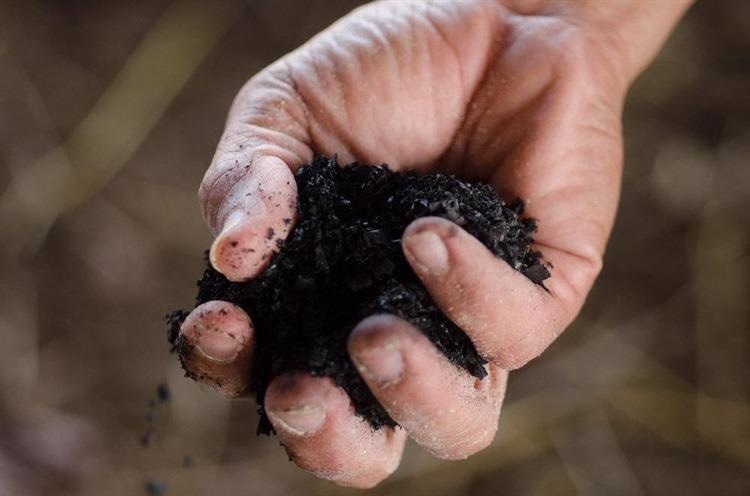An article recently published in the journal Materials Science for Energy Technologies explores the potential of nano-sized mesoporous biochar obtained from biomass pyrolysis as a cheap substance for excellent performance energy storage devices.

Study: Nano-sized Mesoporous Biochar Derived from Biomass Pyrolysis as Electrochemical Energy Storage Supercapacitor. Image Credit: paroonkorn srichan/Shutterstock.com
Self-co-dopes with Nitrogen in 3.65% and Oxygen in 6.44% in the content of porous biochar were created from pyrolysis of biomass pellets and tested for energy storage applications in this study. Two-electrode measurements were performed that showed good energy density and cycling stability.
An Effective and Powerful Storage Device; Nano-sized Mesoporous Biochar
The increasing population and industrial energy demand, as well as the depletion of conventional fossil fuels and the declining surroundings, have motivated enough to find sustainable energy and storage solutions.
Therefore, manufacturing profitable and high-performance materials utilizing a simple synthesis approach that can be applied on a wide scale is an emerging subject of supercapacitor research.
Recently, many nanomaterials have been investigated to increase the efficiency of supercapacitor. Due to expensive production and manufacturing of nanomaterials, the progress in relevant research areas has not been successful. However, researchers hope that a final solution can be found in nano-sized Mesoporous biochar.
![[A] Preparation of biomass pellets [B] Preparation of biomass-derived biochar [C] Camera image of biomass-derived biochar (biochar-800)](https://d1otjdv2bf0507.cloudfront.net/images/news/ImageForNews_38426_16402567981769604.jpg)
[A] Preparation of biomass pellets [B] Preparation of biomass-derived biochar [C] Camera image of biomass-derived biochar (biochar-800) © Hussain, Z. et al. (2021).
Due to their copious accessibility, profitability, and regenerative nature, many biomass-based precursors, such as cellulose, orange peel, coconut shell, corncob, peanut shells, and carbon stalk, have been explored to transform into supercapacitor material.
The biochar exhibited a distinct microstructure, excellent electrical conductivity, a large specific surface area (800-3012 m2g-1), and a chemical constitution that included naturally existing self-doped heteroatoms.
Biochar made from the pyrolysis (chemical change bought about by the action of heat) of inexpensive biomass precursors has a hierarchical porous structure, according to the study, and is nevertheless promising for supercapacitor applications.
The already present elements, i.e., nitrogen, sulfur, phosphorous and calcium, keep desired surface hydrophilicity and excellent cyclic stability. Therefore, the self-doped biochar is a viable option for energy storage due to the pore structure's synergistic effect, attributable to distinctive feedstock microstructure and abundant heteroatoms.
![[A] N2 adsorption isotherm of biochar samples [B] Pore diameter and volume of biochar’s.](https://d1otjdv2bf0507.cloudfront.net/images/news/ImageForNews_38426_16402568078195794.jpg)
[A] N2 adsorption isotherm of biochar samples [B] Pore diameter and volume of biochar’s. © Hussain, Z. et al. (2021).
Preparation, Production, and Characterization of the Biomass Pellets
The current study aims to create nano-sized biochar with a high energy density for supercapacitor applications (from waste garden biomass material or biomass pellet).
This study used biochar specifically and established its utility as a supercapacitor energy storage material. In the preparation of content, biomass is collected, reduced in size, water is added to the binder.
Finally, biomass powder is converted into pellets of 8-10 mm diameter and 15-35 mm length.
Once pellets are obtained, pyrolysis of pellets is done in tubular quarts reaction operating at temperature up to 800 ℃. Nitrogen gas is then released at an optimum flow rate to regulate inert atmosphere.
The vapors are then released, and once carbonaceous biochar is left behind, the samples are collected from the reactor. Finally, the obtained biochar-600 and biochar-800 are crushed in a mortar-pestle, disseminated in an ethanol solution, and maintained in an ultrasonic bath for 6 hours to acquire the nano-sized carbon sheet within biochar.
Afterward, fabrication of coin cell for the two-electrode system is performed where the electrode material is made by combining biochar, acetylene black and several other elements to create a homogeneous sludge.
Characterization of biochar using X-ray diffraction technique (XRD), HR-TEM, Brunauer-Emmett-Teller (BET) and X-ray photoelectron spectroscopy (XPS) in terms of crystallinity, surface morphology, surface area and pore structure analysis and surface chemical composition was then conducted.
![[A] XPS survey scan spectra of the biochar-800 and high-resolution scan of [B-D] C 1s, N 1s, and O 1s [E] Schematic representation of different N and O functionalities.](https://d1otjdv2bf0507.cloudfront.net/images/news/ImageForNews_38426_16402568179016510.jpg)
[A] XPS survey scan spectra of the biochar-800 and high-resolution scan of [B-D] C 1s, N 1s, and O 1s [E] Schematic representation of different N and O functionalities.© Hussain, Z. et al. (2021).
To Conclude
An electrode material was put forward and developed for symmetric pseudocapacitors with high and good specific capacitance and extended cycling stability at higher current densities.
The coin cell gadget was charged for 30 seconds by supplying 3V; as a result, it could light up to 3 V LEDs for up to 60 seconds without the use of an external power source. In summary, the biochar, especially biochar-800, showed remarkable energy density.
Furthermore, the existence of micropores, a decrease in internal resistance, a high specific surface area, and a low relaxation time constant all contributed to improved electrochemical performance.
As a result of the current investigation, the inexpensive co-doped heteroatoms rich hierarchical porous biochar material obtained from biomass pyrolysis will be a perfect substitute for a greater performance pseudocapacitive energy conversion tool.
Continue reading: Could the Focus on Sustainability Help Drive the Graphene Market?
Reference
Hussain, Z. et al. (2021). Nano-sized Mesoporous Biochar Derived from Biomass Pyrolysis as Electrochemical Energy Storage Supercapacitor. Materials Science for Energy Technologies. Available at: https://www.sciencedirect.com/science/article/pii/S2589299121000719?via%3Dihub
Disclaimer: The views expressed here are those of the author expressed in their private capacity and do not necessarily represent the views of AZoM.com Limited T/A AZoNetwork the owner and operator of this website. This disclaimer forms part of the Terms and conditions of use of this website.

